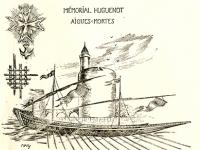Answer: The Pennsylvania Abolition Society
America’s first abolitionist organization was founded here in Philadelphia, when in 1775 a group of Quakers met at the Rising Sun Tavern. The Quakers of Pennsylvania had, for some time, been anti-slavery proponents, having themselves banned the enslaving of African Americans by the 1770s. From this meeting was borne the Pennsylvania Society for the Relief of Free Negroes Unlawfully Held in Bondage. From the beginning, the society’s programs were devoted not only to the abolition of slavery, but to the social and economic improvement of African Americans.
In the 1780s, the society reorganized and its mission and title were expanded to include “improving the Condition of the African Race.” For the founders, this meant offering jobs and education to black youth. At some point during its formative years, the organization became known simply as the Pennsylvania Abolition Society (PAS).
The members of the PAS fought against slavery at a time in our nation’s history when many politicians were silent on this divisive issue. PAS supported the deliberate elimination of slavery rather than the outright prohibition of it, and was therefore pleased when Pennsylvania passed an act for the gradual abolition of slavery in 1780. In 1794, the society established a school for African American men and conducted the first census of the local African American community. The society once boasted about 2,000 members, including Benjamin Rush, William Rawle, and Benjamin Franklin, who served as the society’s president.
The Pennsylvania Abolition Society remains quite active today primarily as a granting organization. Through its own endowment and The Philadelphia Foundation, PAS provides funding to groups in Philadelphia and its neighboring Pennsylvania counties that promote and provide programs related to race relations, African American culture, and multicultural education.
HSP's extensive collection of Pennsylvania Abolition Society records (#490) contains minutes and reports, correspondence, financial records, and other miscellaneous papers of the society. It also contains a large number of manumissions, indentures, and other legal papers concerning the society's efforts to secure the release of slaves brought to Pennsylvania.
Image: Seal of the Pennsylvania Society for Promoting the Abolition of Slavery, circa 1800

